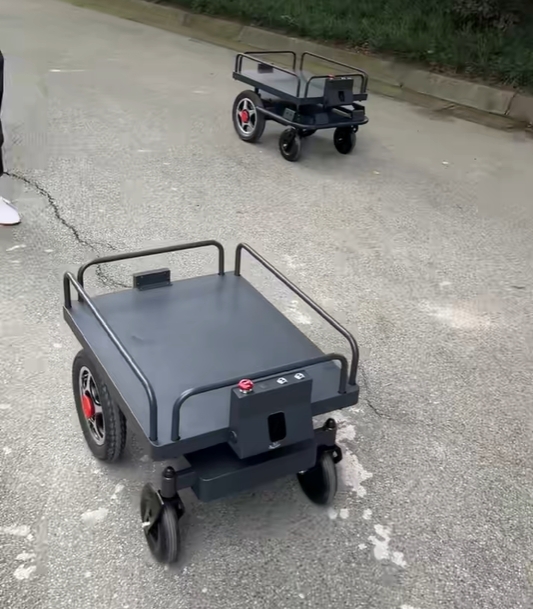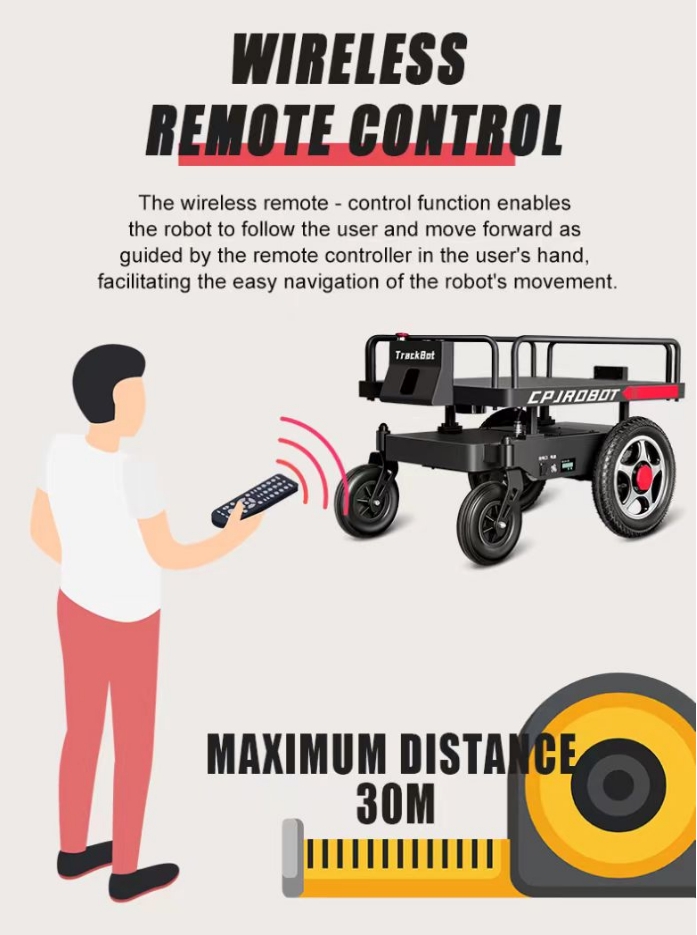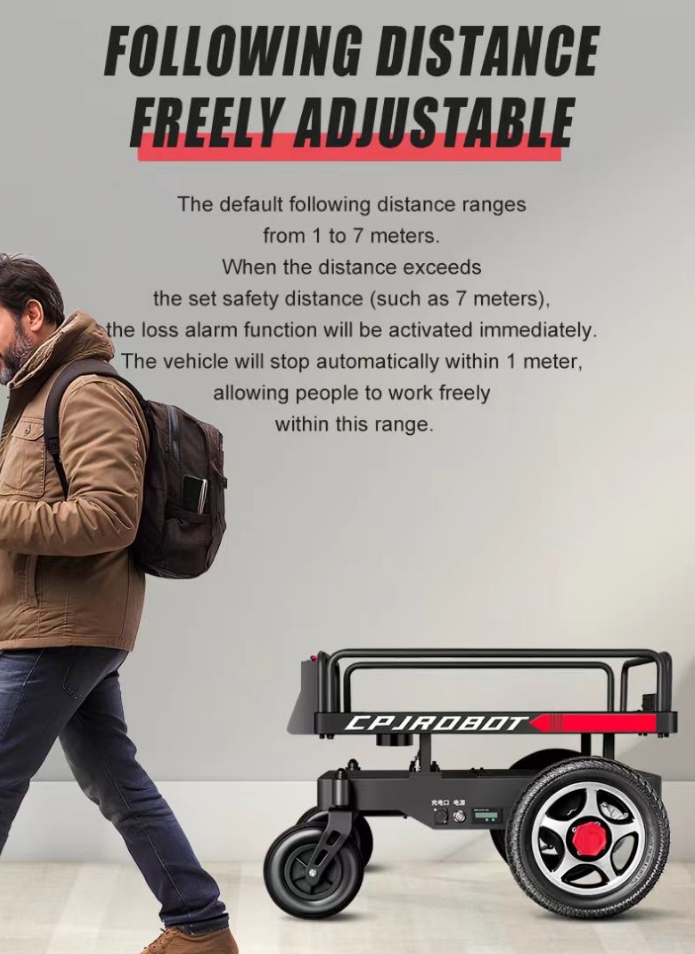The Future of Autonomous Following
Imagine a robot that can follow you seamlessly through a crowded warehouse, dodging obstacles while keeping perfect track of your movements. No more lost carts, no more collisions—just smooth, efficient navigation. This is the power of LiDAR-equipped smart following robots, and they’re transforming industries from logistics to healthcare.
At CPJROBOT, we specialize in LiDAR and robotics technology, and in this guide, we’ll explore how these intelligent machines work, why LiDAR is the game-changer, and where they’re making the biggest impact.
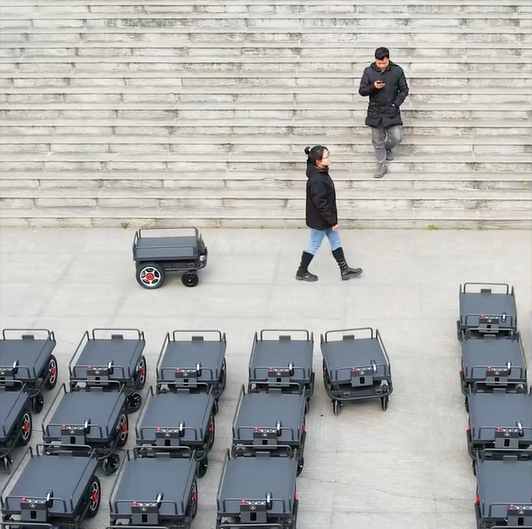
How LiDAR Enables Precision Following
The Problem with Traditional Tracking
Older tracking methods like RFID or Bluetooth struggle in dynamic environments. They lose signal around corners, fail in crowded spaces, and can’t adapt to moving obstacles.
The LiDAR Solution
Modern following robots use LiDAR (Light Detection and Ranging) to create real-time 3D maps of their surroundings. Here’s how it works:
- 360° Laser Scanning – LiDAR emits pulsed laser beams, measuring distances with millimeter precision.
- Simultaneous Localization and Mapping (SLAM) – The robot builds and updates a map while tracking its own position.
- AI-Powered Target Recognition – Using deep learning, the robot identifies and locks onto its follow target (a person, vehicle, or another robot).
Real-World Example:
A hospital in Tokyo uses CPJROBOT assistants that:
- Follow nurses between wards without losing track.
- Pause automatically when staff enter patient rooms.
- Resume following using gait recognition, even if the nurse changes direction suddenly.
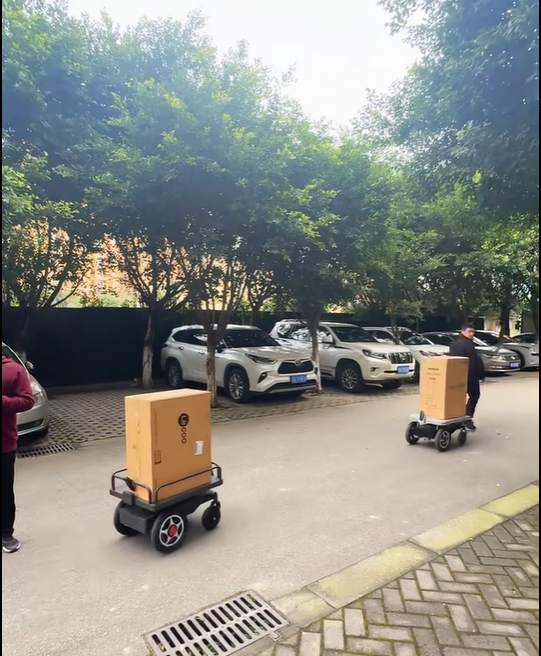
Obstacle Avoidance – Why LiDAR Outperforms Other Sensors
The Limits of Ultrasonic & Infrared Sensors
Many robots rely on ultrasonic or infrared sensors, but these have major drawbacks:
❌ Short detection range (often < 2m)
❌ Struggle with transparent or reflective surfaces (like glass doors)
❌ Can’t distinguish between different obstacle types
How LiDAR + AI Achieves 99% Avoidance Rates
Smart following robots combine LiDAR with AI algorithms for superior navigation:
- LiDAR Pre-Scanning – Detects static obstacles (walls, shelves) up to 10 meters away.
- Stereo Vision Cameras – Classifies moving objects (people, forklifts, pets).
- Predictive Pathfinding – AI forecasts collision risks 2 seconds ahead and adjusts speed/direction.
Performance Data:
In warehouse tests, CPJROBOT’s LiDAR system achieved:
✅ 98.7% obstacle avoidance success at 1.5 m/s speeds
✅ 40% fewer emergency stops compared to ultrasonic-only robots
Where Smart Following Robots Are Changing the Game
1. Warehouses & Logistics
- One worker can lead multiple cargo bots, boosting productivity by 300%.
- Robots auto-dock at charging stations when idle.
2. Retail & Inventory Management
- Scanning shelves while following staff, reducing manual checks.
- Avoiding Black Friday crowds without human intervention.
3. Healthcare & Assisted Living
- Following nurses with medication carts.
- Helping mobility-impaired users with autonomous wheelchairs.
4. Construction & Outdoor Work
- Tool carts that follow crews between zones.
- Auto-stop in hazard areas (geofenced via LiDAR).
Why CPJROBOT’s LiDAR Technology Leads the Industry
Our LRS-4000 LiDAR module is engineered for reliability:
✔ Sub-2cm accuracy at 40m range
✔ IP67 waterproof rating for outdoor/industrial use
✔ Plug-and-play ROS integration for easy deployment
🚀 Ready to upgrade your operations with LiDAR-powered following robots?
